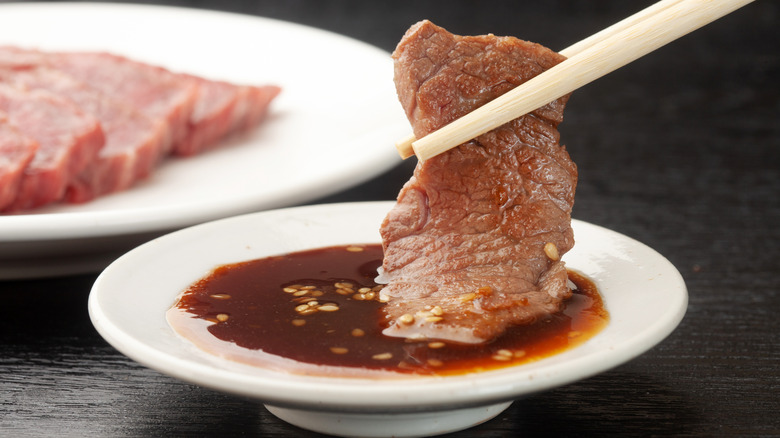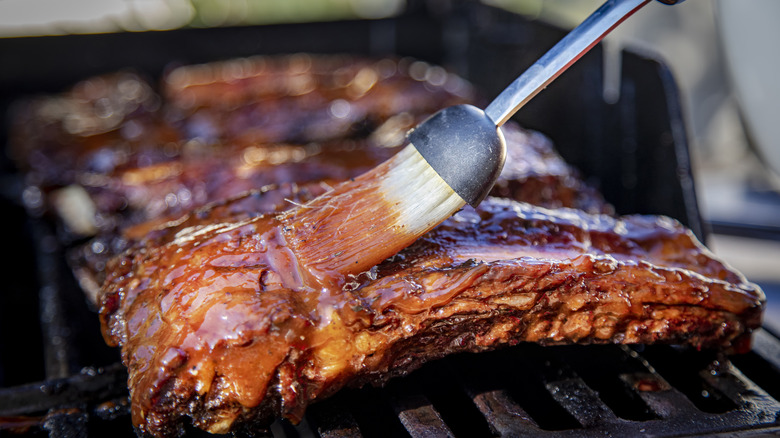This Is The Best Use For Japanese Barbecue Sauce
Yakiniku sauce is the other name for Japanese barbecue sauce. This deliciously rich condiment might reference live fires and smoke in its name, but its uses far exceed the traditional outdoor style of cooking and the meaty dishes. So as you enlist the sauce as a marinade for your beef, chicken, and fish, you can also dip your crunchy grilled veggies in it, and sprinkle a bowl of stir-fried rice with the same delicious stuff. But out of all these, the best use for Yakiniku sauce is as a glaze for meats.
Japanese barbecue sauce serves as a perfect glaze for several reasons. First, its versatility means it pairs well with various types of meat and can be used in a range of cooking styles as we've already mentioned. Secondly, the balanced flavors of the sauce make it stand out all thanks to the unique ingredient combinations: the famous umami kick from soy sauce, an aromatic punch from ginger and garlic, sweet notes from sugar or honey, tanginess from vinegar, and a bit of smoky tunes from sesame oil. This unique flavor combo is the reason Yakiniku sauce complements the natural taste of the meat so well.
Additionally, the sauce's slightly thick consistency helps it adhere to the protein, ensuring every bite is coated with the delicious taste. And to top it all, Japanese barbecue sauce creates a beautiful caramelized finish that not only ups the taste, but also gives the meat an attractive glossy appearance.
How to glaze meat with Japanese barbecue sauce
Glazing may sound complicated, but in reality, it's a simple process of coating a chunk of meat with a sauce. So whether you're an experienced cook or a novice in the kitchen, you'll find it quite straightforward. Begin by choosing the meat — beef, chicken, pork, or fish. Next, decide on your preferred cooking technique. Any dry-heat method of cooking will work, from broiling and roasting to pan-frying and sauteing, or the most obvious barbecuing or grilling.
Now cook your meat as you normally do. Once it's nearly cooked through, have your Japanese barbecue sauce ready because the best time to add glaze is at the end of the cooking. If you're cooking on a flat surface like a pan or baking tray, pour the sauce in and slather it on the meat using a pastry or silicone brush. If you're on a grill, just hold the sauce in a bowl, pick some with the brush, and apply it on the meat one stroke at a time.
Turn the meat over and continue to coat the underside with the sauce. This should take just a few minutes and then you can remove the meat from the fire source. The goal is to let the sauce melt and brown, forming a beautiful sheen, without burning the sugars. With that, your dish is ready. Give it a few minutes to rest, then dig in.

